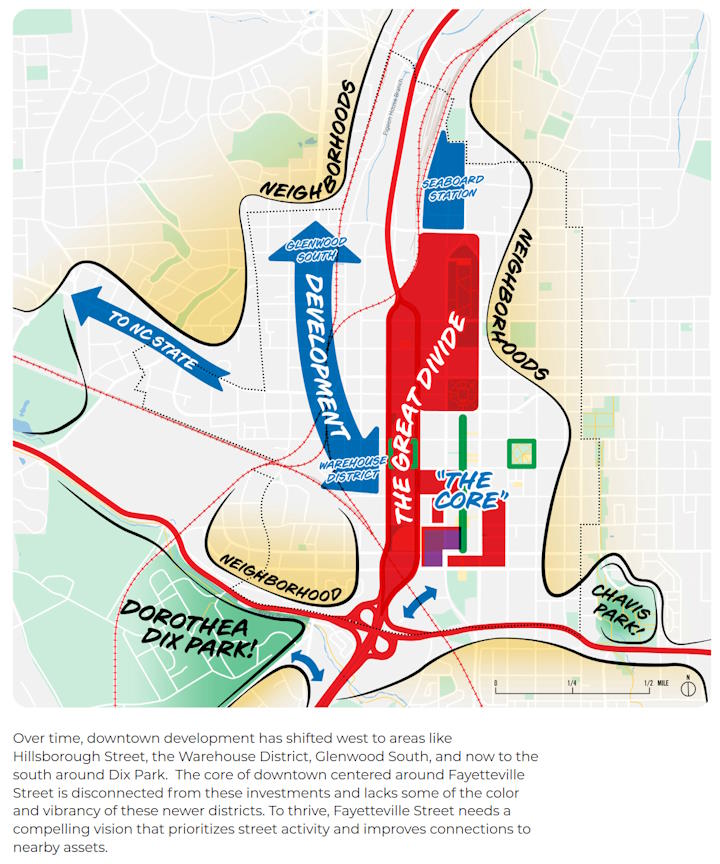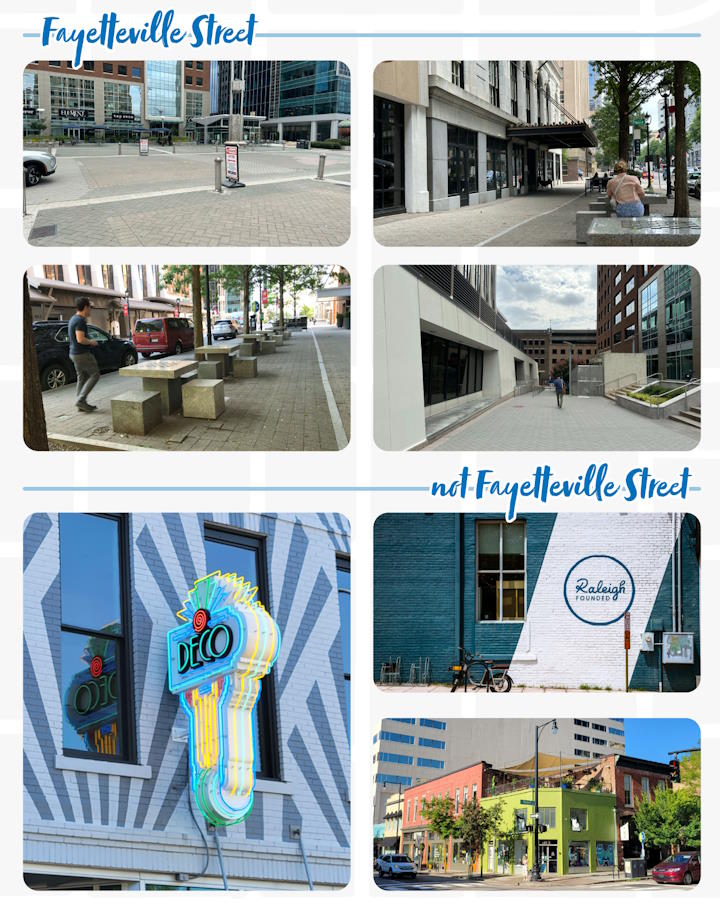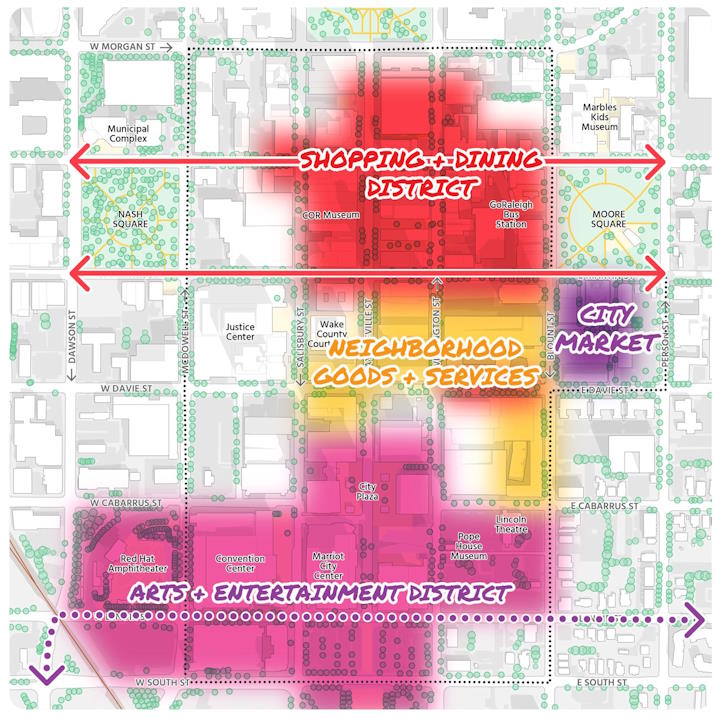The DRA has released the first part of their Economic Development Strategy for Fayetteville Street and the list of recommendations are quite numerous. We’ll still get even more recommendations later this year but this initial piece focuses on the central business district with Fayetteville at the center of it all.
Above is a video of a city council work session where the report’s highlights are presented to council and is a very good watch. Scott Page from Interface Studio, the consultant team on the project, gives us a very comprehensive overview of the plan so watching, or just listening, is highly recommended.
I also want to go through a few highlights but let’s start with some links:
- What is this Economic Development Strategy?
- Where can I read the report?
- Link to YouTube to watch the council presentation
It’s very refreshing to get an outside group to come to Raleigh and kind of lay out the state of things from their perspective, showing us things we can’t see as locals. I almost wish we would do this at some set frequency as a way to always continue improving and addressing any sore spots.
Diving into the report, I felt like we kind of knew that the vibrancy of downtown has shifted to the west side, the Warehouse District and Glenwood South, and they visualize this perfectly. Here are some snapshots that kind of show this.


“The Great Divide” is something I’ll hang on to for awhile as it may show that streets built for the purposes of moving vehicles does not create as much economic activity as it should. Maybe we can address the Great Divide with my idea of removing and retrofitting Capital Boulevard north of downtown, converting the McDowell/Dawson street pairs to two-way, and basically road dieting Saunders south of downtown, all after I-540 is completed. That’s certainly an idea for a future post.
In addition to the above, I really like this visual showing the different uses around Fayetteville Street. This almost suggests that we need to start think East/West rather than North/South.

A shopping and dining district between Moore and Nash Square could be where we focus our efforts as there is momentum here already. If higher-density development at the former N&O block ever gets going, that could be a nice catalyst. Bookended on the east side with the Moore Square East plans and there could be as much retail space as most shopping districts in the city. This one would also be accessible by bus.
Since I’m interjecting wild ideas, my previous one of a walkway between the two squares doesn’t seem so out-of-place now does it? But again, that’s for another post.
There’s so much more to talk about that I would end up reposting the report so yet again, I highly recommend you spend some time with either the video or the document. The report mentions 10 big ideas for Fayetteville Street which are:
- Develop a streetscape design for Fayetteville Street that offers variations on a theme
- Build a strong foundation to ensure downtown is clean, safe and vibrant
- Develop a family-friendly itinerary and route around Fayetteville Street attractions
- Design and market the downtown core as North Carolina’s Main Street
- Celebrate Raleigh’s Black Business District
- Add more housing on and around Fayetteville Street
- Use public space to support neighborhood livability
- Reposition City Plaza as downtown’s front porch
- Grow Raleigh’s arts and entertainment district
- Create a bold connection south of downtown
With each big idea, the report has visuals and a to-do list that will support each one. Some will be more fleshed out with the second half of the report due later this year, such as #10 the connection to Dix Park.
For me, there’s a lot to get excited about here and in my recent post about what I think Fayetteville Street needs we can see a “loosening up” recommendation around the street itself here in the report. The street has been value engineered to be mediocre and while it accommodates everyone, it doesn’t do anything very well. Other districts just seem more attractive to local entrepreneurs.
Downtown has the attractions, shops, and restaurants that cater to all but there’s no fabric to stitch it together. This hurts us as great places have this fabric and I want to think people almost expect that as recently-built lifestyle centers like North Hills and Fenton offer a tight, urban-like experience. We shouldn’t wait for development to fill in the gaps but can, in the short-term, create that fabric with great spaces and easy mobility.
I’m excited to see what’s next and hope council can move on some of the low-hanging fruit that’s mentioned in the report.
Comments
Comments are disabled here. That's because we're all hanging out on the DTRaleigh Community, an online forum for passionate fans of the Oak City.
